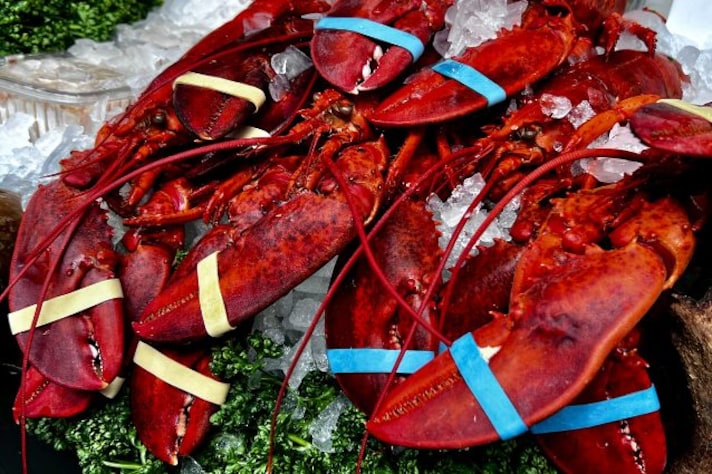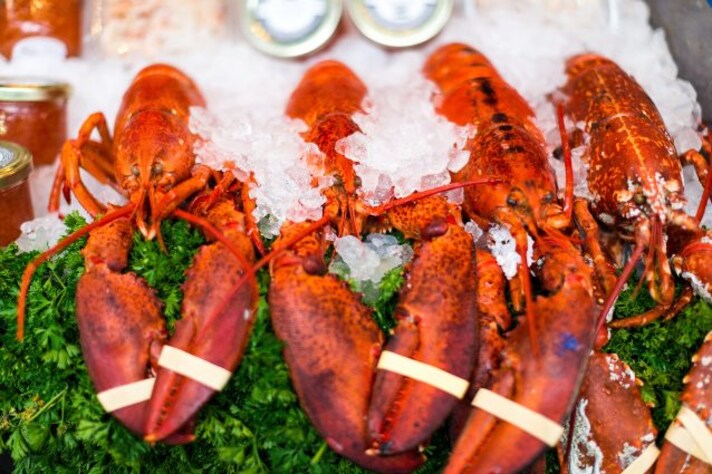How to Store a Live Lobster at Home Before Cooking It And How Long You Can Keep It
Storing your live lobster until you have to cook it might be trickier than cooking it! Lobsters need to be alive when you go to cook them: to keep them at the best of their shape, make sure to keep them in a moist and cold environment. Read ahead for all the do's and don'ts of keeping live lobsters at home!

When festive occasions roll around, a luxurious lobster on the dinner table is often a showstopper. While cooking lobster is an art in itself, the trickiest part might just be keeping it alive until you’re ready to cook it! Lobsters are delicate creatures, and cooking them after they've died (unless already frozen) can spoil the taste and texture. So, keeping your lobster alive until it hits the pot is crucial—and it requires some very specific care.
How Long Can a Lobster Stay Alive at Home?
Lobsters can survive out of water for up to 24-36 hours if stored correctly, but don't push your luck. Time is of the essence when it comes to cooking lobster while it's fresh and, most importantly, still alive. Freezing a live lobster whole is a huge no-no, as it leads to mushy meat and a loss of flavor. Cooking lobsters alive ensures the best quality and avoids the release of harmful toxins that can build up in their bodies once they’ve died. So, if you plan on impressing your guests with a succulent lobster feast, you’ll want to cook it as fresh as possible.

How to Keep Your Lobster Alive for the Big Day
So, you've brought your live lobster home—now what? If you’re planning to cook it the same day, keep it in the coldest part of your refrigerator. Place the lobster in a container, but don't seal it too tightly. Lobsters need air to breathe, so leave the top cracked open or loosely covered with a damp cloth to prevent drying out. The cold temperature will slow their metabolism, keeping them calm until you're ready to cook.
But what if you’re not cooking until tomorrow or later? You’ll still want to store the lobster in your fridge, but here’s the twist: wrap it in seaweed or a damp newspaper to mimic the cool, moist conditions of its natural habitat. Keep it in a container that allows for some airflow, and avoid direct contact with ice. It may seem counterintuitive, but too much ice or fresh water can actually kill your lobster faster than you think!
What Not to Do When Keeping a Live Lobster
Now, let's clear up some common misconceptions—and some absolute don’ts—when it comes to lobster care. First off, never, and I mean never, put your lobster in tap water. Lobsters are saltwater creatures, and submerging them in fresh water is a recipe for disaster. You’ll basically be drowning them, and that’s not the kind of dinner party drama you want!

Another no-no? Storing them in a sealed plastic bag or container. Lobsters need oxygen, and locking them up like a takeout order will cause them to suffocate. And while this may sound obvious, it's worth mentioning: do not attempt to freeze a live lobster. The result is not only inhumane but also ruins the texture of the meat, leaving it rubbery and unpleasant.
How to Tell If Something’s Wrong with Your Lobster
So, how can you tell if your lobster has gone bad before you even cook it? One of the biggest signs is inactivity—if your lobster is sluggish, limp, or doesn't move its legs when you touch it, it’s probably not in good shape. A live lobster should be feisty! Once cooked, the lobster meat should be white, firm, and opaque. If the flesh is slimy, has an off odor, or looks grayish, it’s a clear sign that something’s wrong, and it’s best to discard it.
;Resize,width=767;)
;Resize,width=712;)
;Resize,width=712;)
;Resize,width=712;)
